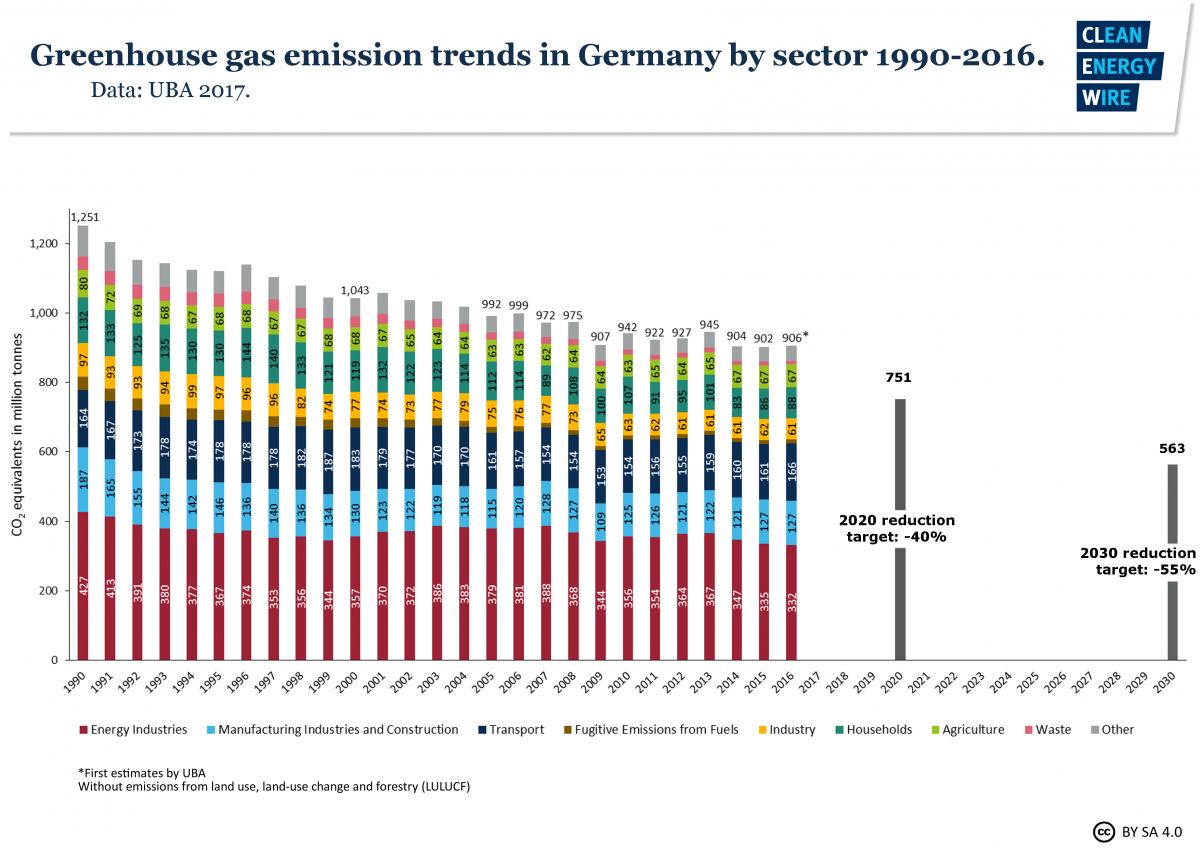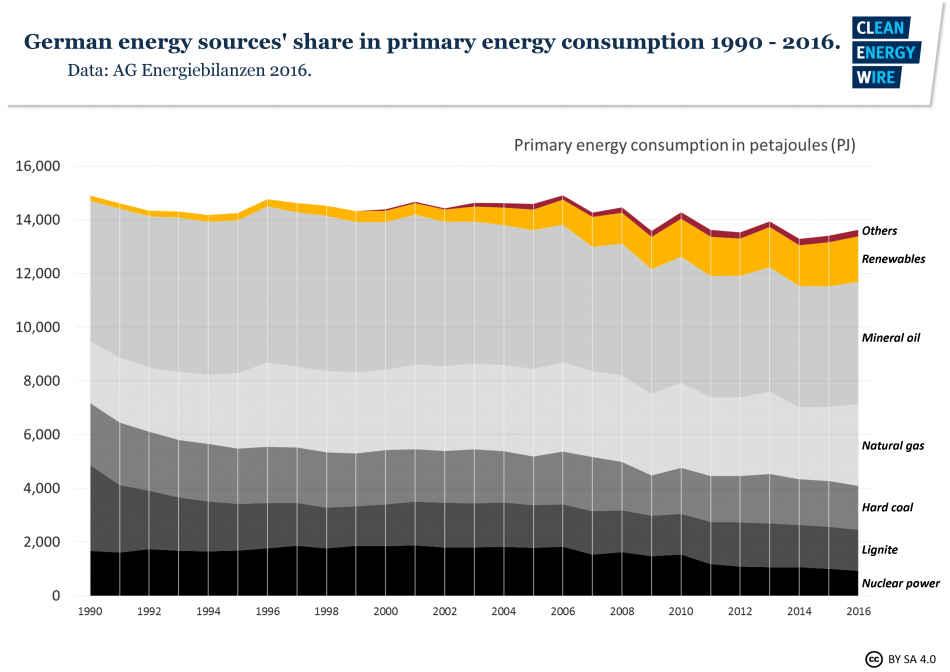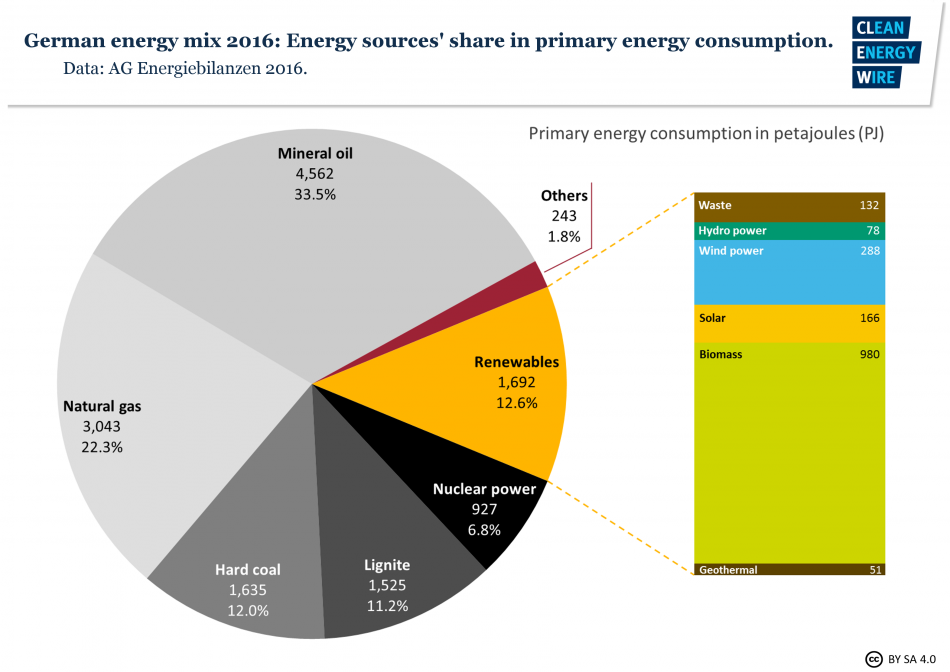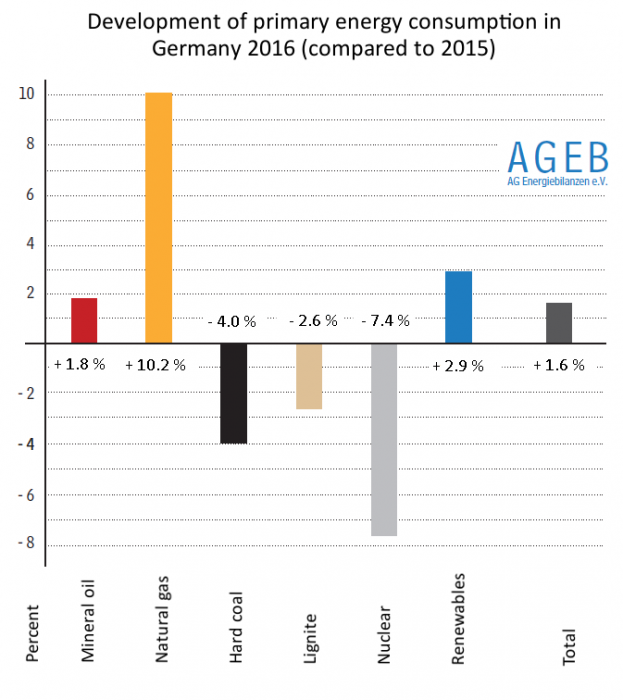German carbon emissions rise in 2016 despite coal use drop
The country’s total energy consumption rose by 1.6 percent in 2016 compared to 2015, according to AG Energiebilanzen (AGEB). Colder weather, 2016’s leap day, a growing economy and population growth outweighed any energy savings, writes AGEB in a press release.
The latest data underpins many experts’ view that Germany was unlikely to meet the target of reducing primary energy consumption by 20 percent by 2020 compared to 2008 levels. Applying AGEB’s estimates, energy consumption in 2016 is 6.6 percent lower than in 2008.
Primary energy consumption is also crucial to determining Germany’s CO₂ emissions. The country of the Energiewende, the dual move to phase-out nuclear power and cut carbon emissions, has made great strides in increasing the share of renewables in power generation, but CO2 emissions have remained stubbornly high, making it increasingly unlikely Germany will reach its target of cutting emissions 40 percent by 2020 compared to 1990 levels.
AGEB estimated that energy-related CO₂ emissions grew by 0.9 percent in 2016. All energy-related emissions make up about 85 percent of the country’s total greenhouse gas emissions. The Federal Environment Agency (UBA) will publish first detailed estimates of total greenhouse gas emissions for 2016 next March.
Hard coal and lignite consumption fell 4 percent and 2.6 percent respectively, while natural gas-fired and renewable power generation increased, writes AGEB. The CO₂ emissions saved through the drop of coal use were more than offset by an increase in consumption of mineral oil and a 10 percent jump in the use of natural gas.
The 1.8 percent increase of mineral oil consumption was mainly due to a higher use of diesel fuel in transport, a sector that has seen almost no change in emissions since 2007.
Renewable energy sources increased their share slightly to a 12.6 percent of total primary energy consumption. Consumption of nuclear energy fell 7.4 percent compared to 2015, which was due to several planned outings, and because the nuclear power station Grafenrheinfeld went offline in June 2015.
BDEW: Natural gas “must play central role” in energy supply
The head of Germany’s utilities lobby BDEW told journalists at the association’s year-end media conference that too much focus was on long-term targets, ignoring solutions to the near-term challenges. “We debate too much about distant targets. Those are not Germany’s core challenge. The question is: How do we eliminate CO₂ from our system as fast as possible?” BDEW-head Stefan Kapferer said at a press conference in Berlin.
Kapferer said natural gas provided a solution as its use leads to less emissions than coal, which still provides more than 40 percent of the country’s gross power generation. “Natural gas must play a central role in Germany’s energy supply until 2050,” said Kapferer. “It can be used to pick the low hanging fruits in the short term and support the country’s energy supply through technologies like power-to-gas in the long term.”





